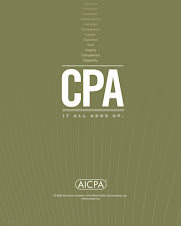Tax Freedom Day will arrive on April 12 this year, the 102nd day of 2011, according to the Tax Foundation's annual calculation using the latest government data on income and taxes. Americans will work well over three months of the year—from January 1 to April 12—before they have earned enough money to pay this year's tax obligations at the federal, state and local levels.
For those of you that are interested in how taxes have changed over the years check out the Tax Foundation Special Report No. 190, "Tax Freedom Day Arrives on April 12, "http://WWW.taxfoundation.org/research/show/93.html Tax Foundation Staff Economist Kail Padgitt, Ph.D., traces the course of America's tax burden since 1900, examines the composition of today's tax burden by type of tax, and calculates a Tax Freedom Day for each state.
"Tax Freedom Day 2011 is later than last year largely because of income changes rather than statutory tax law changes," said Padgitt. "As the economic recovery continues, individuals' rising income pushes them into higher tax brackets. Also, corporate tax revenue has also seen a resurgence." Although income increases are the main reason for the later Tax Freedom Day, several tax law changes are also partly to blame. The federal estate tax has returned after a one-year repeal, this time at a rate of 35 percent and with an exemption of $5 million. In addition, taxes associated with the Patient Protection and the Affordable Care Act continue to be phased in.
But that does not include the deficit. Add 41 Days to the Cost of Government Tax Freedom Day, like almost all tax burden measures, does not take into account the current year's federal budget deficit. Only taxes that will actually be collected during 2011 count in the tally. In many years the deficit is fairly small as a percentage of total government spending, so Tax Freedom Day alone is a good guide to the size of government. Since 2008, however, deficits have increased dramatically. As a result, Tax Freedom Day may give the impression that the burden of government is smaller than it is.
If the federal government were planning to collect enough in taxes during 2011 to finance all of its spending, it would have to collect about $1.48 trillion more, and Tax Freedom Day would arrive on May 23 instead of April 12—adding an additional 41 days to the nation's work for government. This date for a deficit-inclusive measure is the latest since World War II.


